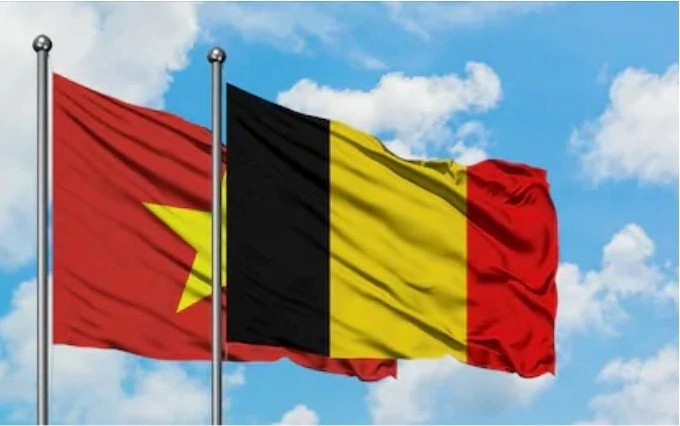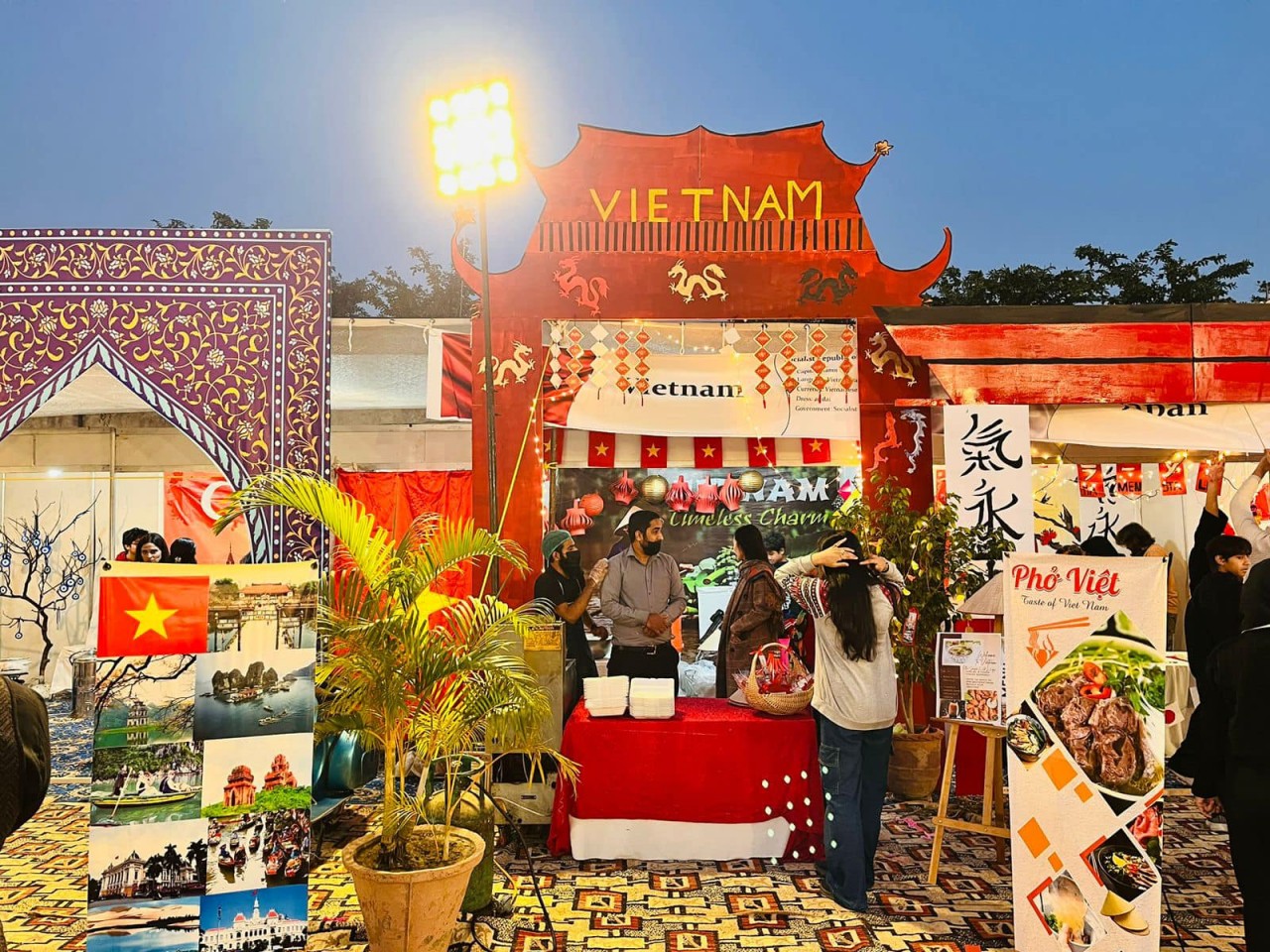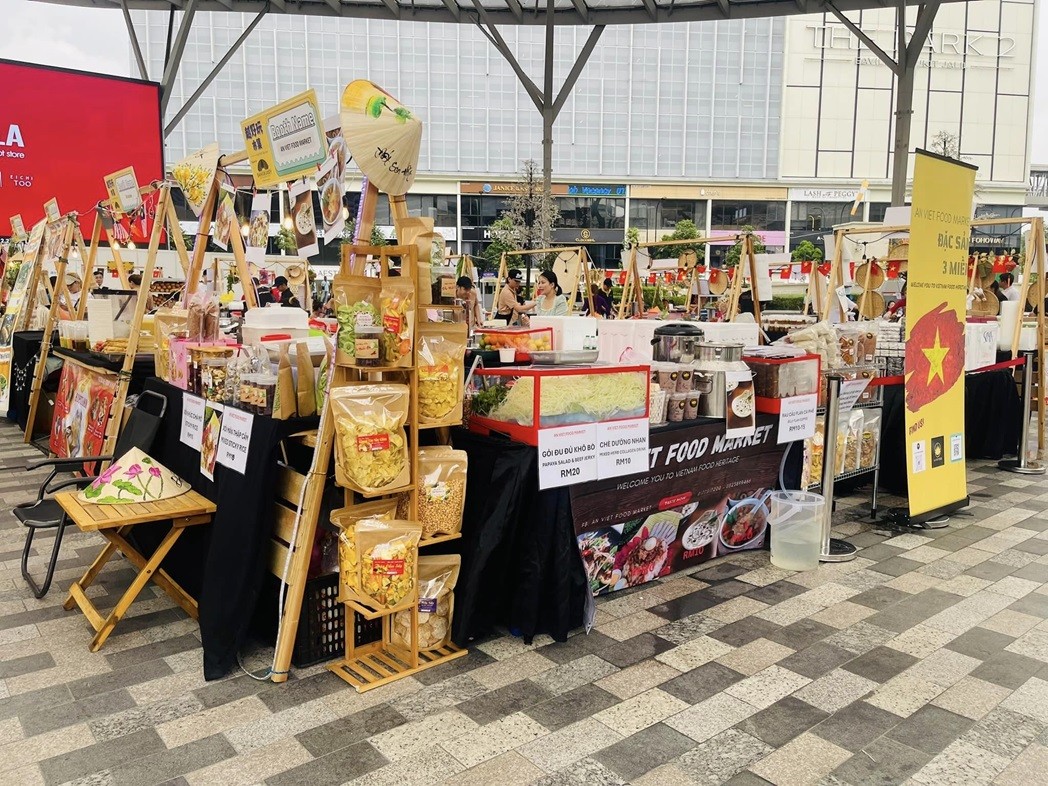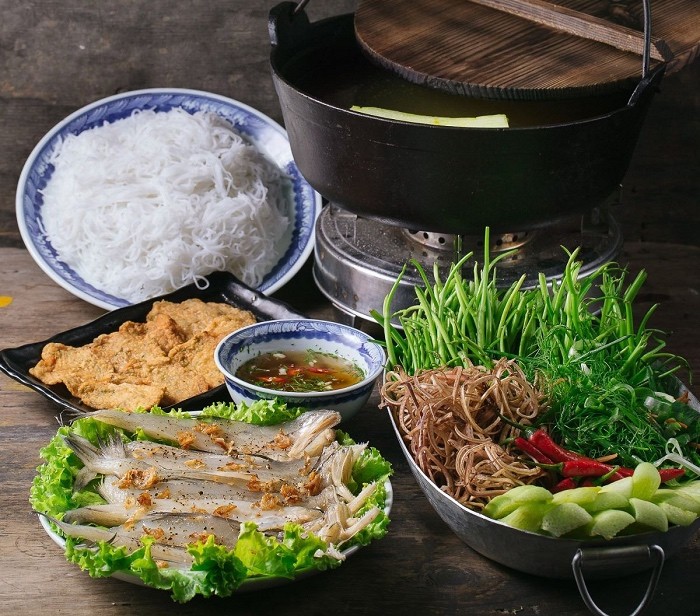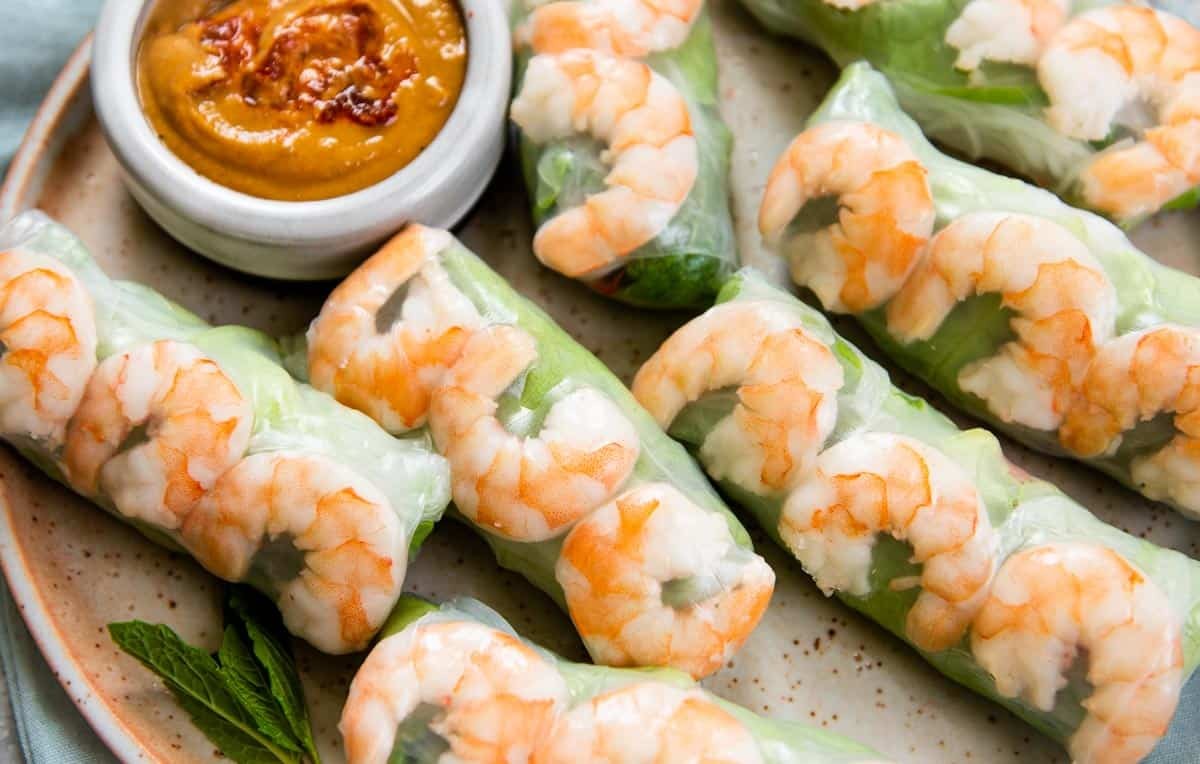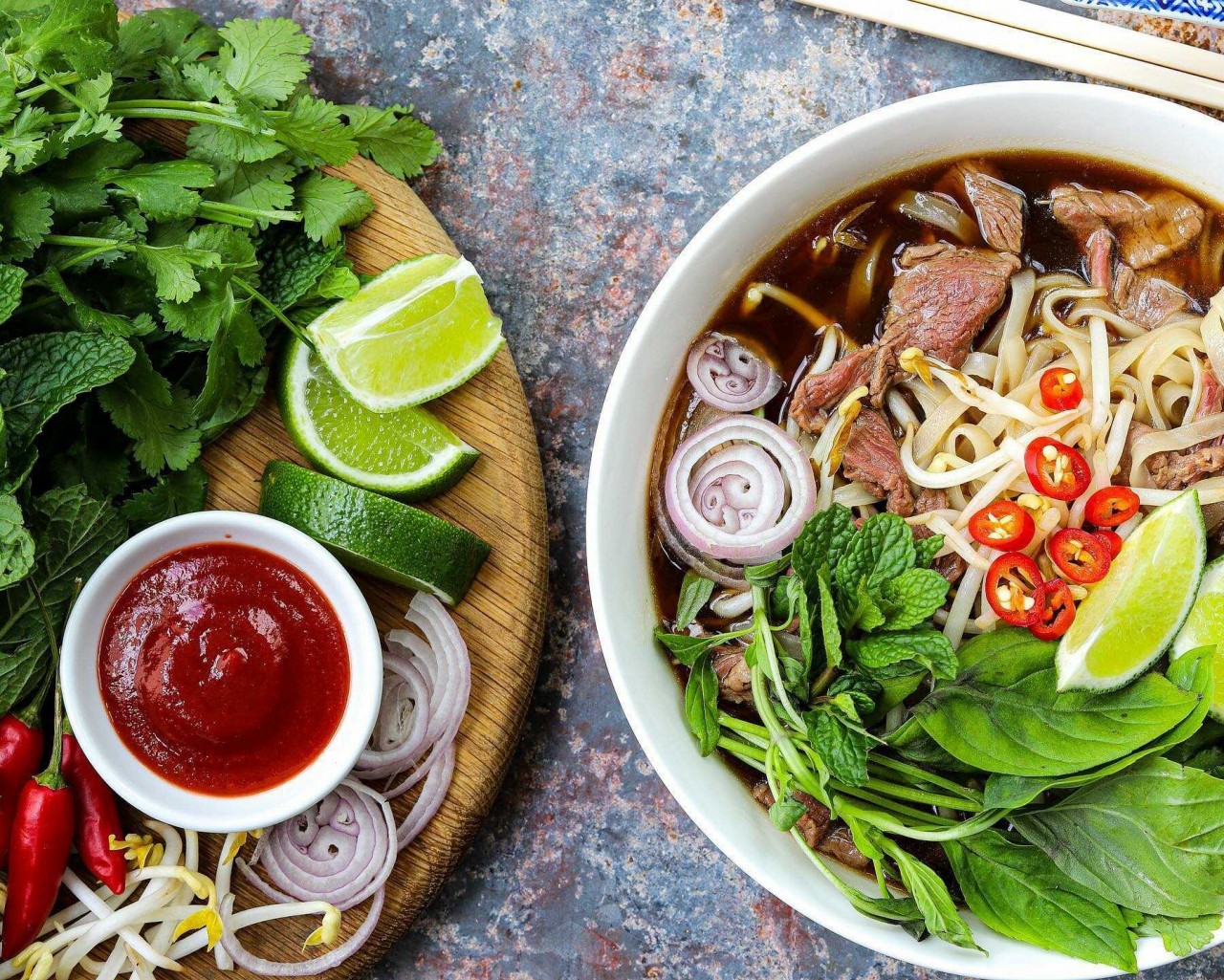Sweet Banh Canh – A Must-try Delicacy in the Mekong River Delta
Banh Canh is thick Vietnamese noodles that can be made from tapioca flour or a mixture of tapioca and rice flour. A traditional Vietnamese dish, Banh Canh can be both savory and sweet, depending on the region.
The Mekong River Delta is famous for its wide variety of Banh Canh.
The Ben Co rice noodles Banh Canh, available in Tra Vinh province, is served with a rich broth cooked with pork meat and pork bones and eaten with pork offal and meat. Meanwhile, the Banh Canh version in Ben Tre and Tien Giang provinces is cooked together with minced, well-seasoned Siamese duck, coconut milk, pepper and scallions, creating an aromatic noodles soup that is full of umami deliciousness.
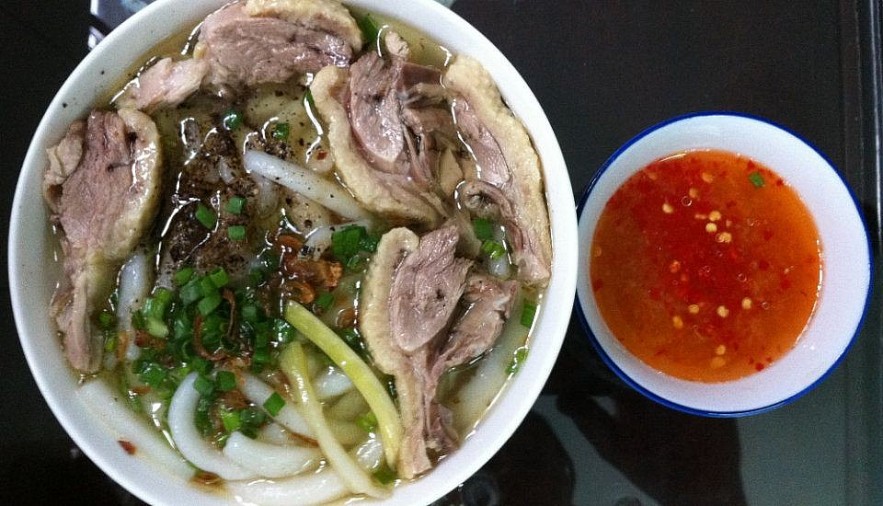 |
| Banh Canh cooked with Siamese duck in Ben Tre and Tien Giang provinces. Photo: Foody |
In Dong Thap province, locals make sweet Banh Canh (Banh Canh Ngot) that can be eaten as an after-meal dessert or a light snack.
For many people, sweet Banh Canh is an irreplaceable part of their childhood. In the past, locals often crossed hundreds of kilometers across the Mekong River by boat during the fourth month of the lunar calendar to come to Chau Doc, a city in An Giang Province that borders Cambodia, to visit Ba Chua Xu - the goddess of prosperity in Vietnamese folk religions. The trip could last for days, so locals often brought along rice and portable stoves to cook on the boats.
Upon coming back, they brought An Giang specialties to be used in the family or give to their neighbors as presents. Amongst these specialties stood out palm sugar, which could be used to make dessert or braise fish. This is one of the key ingredients for sweet Banh Canh.
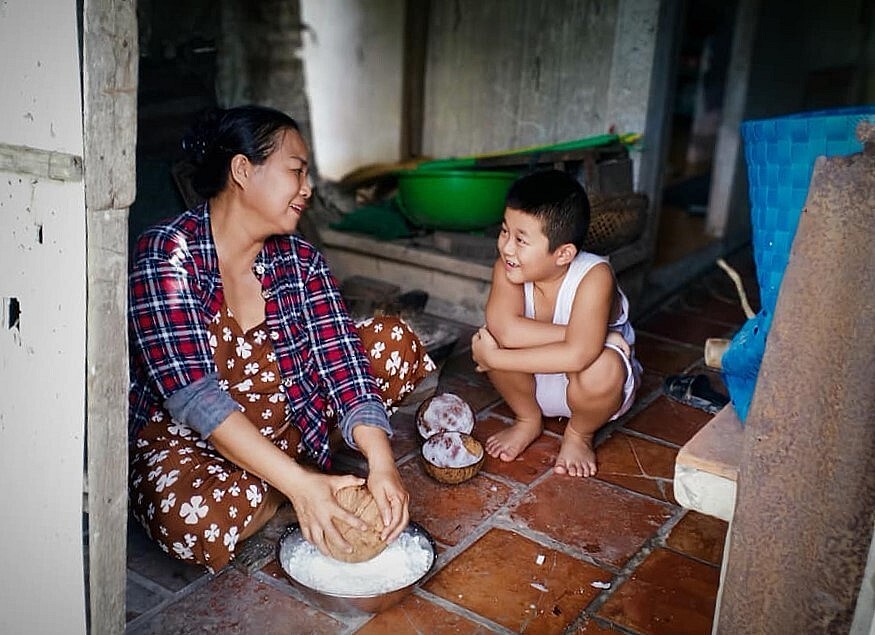 |
| Scraping coconut to prepare coconut milk. Photo: Le Huu Tuong/VnExpress |
Sweet Banh Canh is a rustic dish made with rice powder, coconut milk and palm sugar that are mixed well according to a certain ratio to creating a refreshing, slightly sweet and rich dessert. In some households, the noodles for sweet Banh Canh can be made by mixing rice powder with wheat flour to make the noodles softer and more stringent.
For the coconut, locals choose dry fruit. After removing the hard outer shells, they shave the coconut meat finely then putting them in a clean cloth and pressing tightly to extract coconut milk. Finally, they boil the milk and add some salt to enhance its richness.
To cook palm sugar, locals cut them into small pieces and cook with water until boiled before adding the Banh Canh noodles to the palm sugar soup. Depending on local taste, some also add pandan leaves into the boiling soup.
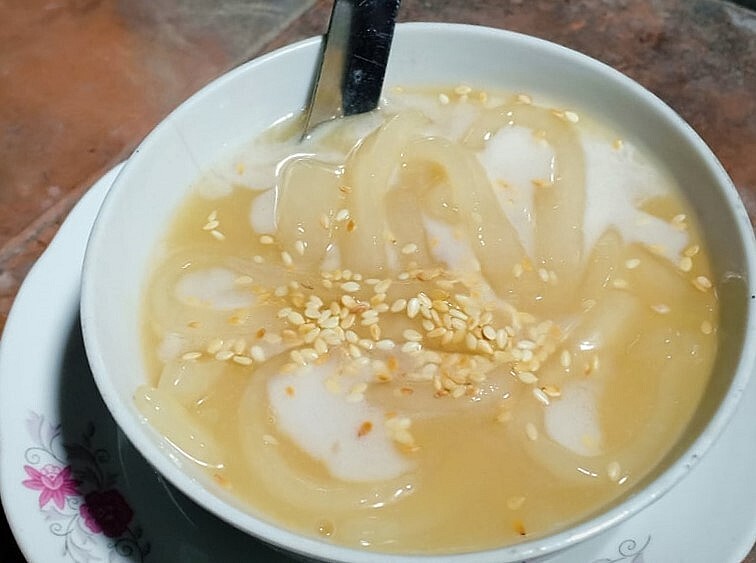 |
| Sweet Banh Canh noodles, a specialty of the Mekong Delta. Photo: Le Huu Tuong/VnExpress |
When the Banh Canh noodles turn transparent and slightly yellow, locals add coconut milk without mixing every ingredient up.
To serve sweet Banh Canh, locals take the noodles from the pot, still with coconut milk on top, then add roasted sesame. The refreshing taste of palm sugar and richness of coconut milk can immediately attract those with a sweet tooth. The dish should be eaten while still hot so that the noodles’ consistency and flavors can be best retained.
The soft yet stringent noodles, combining with refreshing palm sugar and rich coconut milk will make the taste buds sing.
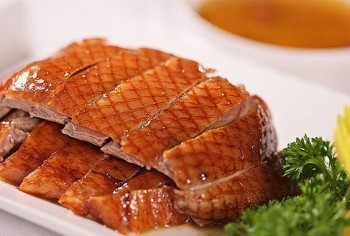 | Must-try Delicacies in Cao Bang Province Not only famous for spectacular landscapes, Cao Bang also attracts tourists with its wide array of mesmerizing delicacies. |
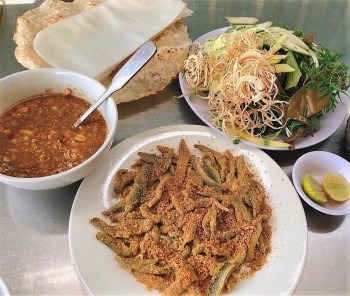 | Nam O Ancient Fishing Village’s Iconic Raw Fish Salad – A Must-try Dish in Da Nang City Locals in the ancient fishing village of Nam O use fresh herring to create a raw fish salad, an iconic dish that any tourists coming ... |
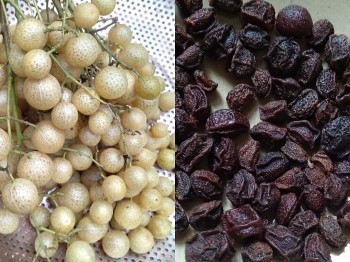 | Mac Mat Fruit: the All-purpose Seasoning of the Tay Ethnic Minority Group Mac mat, a popular fruit in northern Vietnam with a tangy, sweet and refreshing taste, is treasured by the Tay ethnic minority group, elevating the ... |
In topics
Recommended
 Handbook
Handbook
Vietnam Moves Up 8 Places In World Happiness Index
 Handbook
Handbook
Travelling Vietnam Through French Artist's Children Book
 Multimedia
Multimedia
Vietnamese Turmeric Fish among Best Asian Dishes: TasteAtlas
 Handbook
Handbook
From Lost to Found: German Tourist Thanks Vietnamese Police for Returning His Bag
Popular article
 Handbook
Handbook
Prediction and Resolution for the Disasters of Humanity
 Handbook
Handbook
16 French Films To Be Shown For Free During Tet Holiday In Vietnam
 Handbook
Handbook
Unique Cultural and Religious Activities to Welcome Year of the Snake
 Handbook
Handbook





